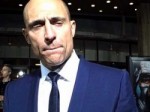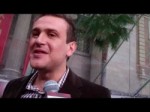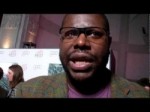December 8, 2011

http://www.youtube.com/v/c6yof_cpGKw?version=3&f=user_uploads&app=youtube_gdata Mark Strong talks to Los Angeles Times reporter Emily Rome at the LA premiere of “Tinker Tailor Soldier Spy. Here is the original post: Mark Strong at the premiere of “Tinker Tailor Soldier Spy”
Tags: angeles-times, ca news, film, firth, george smiley, interview, john le carré, losangelestimes, red carpet, the-original, the-premiere, video
Posted in Local News | Comments Off on Mark Strong at the premiere of "Tinker Tailor Soldier Spy"
December 6, 2011
Dr. William Brien was elected to the City Council in 2009 and is now serving his rotation as the vice mayor. Before that he was on the Recreation and Parks Commission and Beverly Hills Unified School District Board of Education. Civic duties aside, Brien is an orthopedic surgeon at Cedars-Sinai Medical Center. He is the hospital’s executive vice chairman of the department of surgery and the director of the Cedars-Sinai Orthopedic Center. He is also a former Cedars-Sinai chief of staff. A lifelong Beverly Hills resident, Brien attended Hawthorne and Beverly Hills High. His four children have also attended city schools. Patch recently met with the vice mayor for some coffee and conversation. In part one of our interview with Brien, we discussed the Joint Powers Agreement and negotiations with the school board, the possibility of a subway tunnel going under the city’s only high school and future plans regarding the pensions of Beverly Hills employees. Beverly Hills Patch: What is the status of the latest Joint Powers Agreement , a four-year contract in which the city pays the school district for access to school facilities? Vice Mayor William Brien: The end goal is to come up with a funding formula that can be supportive of the schools and also makes sense for the city. I don’t think the concept of major reductions that meet the other percentages of reductions we’ve had will occur. We recognize the value of the school facilities and also the need that the school kids and district have. What the final funding number will be, I don’t know yet. We need to sit down and get into some of the details with the school district … what their expectations are … in terms of access and use, and what’s going to be available. But I don’t foresee major reductions in this. And certainly we’ll work together to protect the kids in this district … that’s really what we want to make sure we do here. Patch: What are the city’s next steps in opposing a Metropolitan Transportation Authority subway tunnel from going under Beverly Hills High School ? Brien: The reviews that came out basically said [Metro staff] believe that there was a significant safety risk on Santa Monica Boulevard , and there was not a significant safety risk from an earthquake—in geotechnical and seismologic standpoints—from going under the high school. The staff will make their recommendation to the [Metro board of directors] and I’m sure their recommendation will be under the high school. Then it will be up to the Metro board members to decide whether or not they believe that that’s the right thing to do or not. And we’ll see what they have to say on that. I think from the standpoint of the city and school district, I believe that all of us have been unanimous in opposing the subway going under Beverly Hills High School. I believe that there is a reasonable alternative still on Santa Monica. I don’t know whether it’s unsafe or less safe, and whether or not something can be built structurally sound and made as safe with additional dollars if it goes down Santa Monica. I think those are the things that we need to look at. If it’s totally unsafe on Santa Monica, I would not support building it in that area. Patch: Will the City Council and the BHUSD school board join together in an effort to stop Metro from tunneling under BHHS? Brien: I think that we as a city and a school district need to put aside the past rhetoric —because that’s what it was—and actually start looking at the science that was put out and see whether or not the reports are scientifically accurate, factual and really represent the risk or not to the Santa Monica alignment. I think that that’s our job to do now. We actually have data and I’ve said from the beginning I want to see the data. I want to look at this in a scientific way and I want to make that assessment—still opposing going under the high school—but I wanted to see that data and I think that that’s the way you make good decisions. I think that the rhetoric was dismissive and unfortunately unnecessary, and yet we were all saying we don’t want it under the high school. Just some of our voices were not being heard no matter how many times we said that. In the end we now will put together a working group. Council member [Lili] Bosse and I will be looking at this and we will be reaching out to the school board and they will decide who’s going to liaison with us, if they want to liaison with us, and then we’re going to come up with a plan to jointly review [Metro’s] information, I hope. I think the community needs to be able to understand our assessment of Metro’s data. Then we’ll be able to better assess what our options are, whether the final EIR [Environmental Impact Report] is appropriate or not and if there are issues, demand that those issues be addressed. Patch: How much money is Beverly Hills willing to spend to stop a subway from going under the high school? Brien: When you look at these types of issues, No. 1, you identify what your options are. And our options are, not being the decision maker, to oppose things. You have to look at the rationale of how you’re going to oppose that and what is the most successful way by which you can win. Some of that may be based on science, some of that may be based on challenging components of the final EIR. Some of that may be political. You look at all of those and you see which way you can best accomplish what the goal is, which is to not have a tunnel under the high school. At the end of the day you have to do an assessment on how much it would cost and what your chances are to win. At that point you make a decision how much you’re willing to expend. We’re going to spend money on this but at the end of the day, if the court system rules against our wishes and in favor of Metro’s, if that ends up being under the high school, then you start to run out of options. The other issue here though is they don’t have federal funding yet. We’ll see if it happens. To throw away precious school dollars, building dollars, dollars for kids … for the city to spend precious dollars taking away from critical city services—because we’ve made a lot of cuts over the last few years, and any more cuts do affect city services—you’ve got to weigh that in terms of whether or not you even need to spend at all right now. Patch: What is the status of pension plans for city employees? Brien: With regards to pensions, some of it is actually negotiated; some of it is governed by state law through CalPERS and is controlled by the state Legislature. Some things that we might as a city want to change, and maybe even some of our colleagues in the different unions in the city might even agree to change, sometimes you can’t change it because state law trumps that and there’s legislative control over that. I do think that in general, in the state of California locally and in cities around Beverly Hills, people have looked and basically said the current pension structure over the long term is not sustainable for municipalities, for counties and for the state. I think that you have to have some pension reform, and that’s OK. The reality is we need to find, working with our unions, a way to … sustain pensions for our employees that are retired, our employees that are here today and employees that come in the future—in a way that doesn’t bankrupt the city in the next 20 or 30 or 40 years. A dollar saved today has a profound impact over 40 years’ time in the city. What can change going forward for people within [current pension plans] is contribution—the employee contribution can change. And that can impact them. If you take 1 percent employee contribution, where right now the city or municipality is providing all 9 percent of it, that in essence is a 1 percent decrease in [employee] take-home pay because they’re putting money towards their retirement. This interview has been edited and condensed. Be sure to follow Beverly Hills Patch on Twitter and “Like” us on Facebook . More here: Vice Mayor Talks JPA, Metro and Pensions
Tags: beverly hills, celebrity, children, council, dining, interview, mayor, recommendation, school, subway
Posted in Local News | Comments Off on Vice Mayor Talks JPA, Metro and Pensions
November 16, 2011

http://www.youtube.com/v/tfmJm_UKjXw?version=3&f=user_uploads&app=youtube_gdata Robert Pattinson talks to reporters at the “The Twilight Saga: Breaking Dawn – Part 1″ premiere. Continue reading here: Robert Pattinson at the “The Twilight Saga: Breaking Dawn – Part 1” premiere
Tags: breaking-dawn, ca news, interview, kstew, latimes, times, twilight-saga, video
Posted in Local News | Comments Off on Robert Pattinson at the "The Twilight Saga: Breaking Dawn – Part 1" premiere
November 13, 2011

http://www.youtube.com/v/b46RTkom63E?version=3&f=user_uploads&app=youtube_gdata Jason Segel talks to LA Times reporter Amy Kaufman at the premiere of “The Muppets.” Read the original post: Jason Segel at “The Muppets” premiere
Tags: adams, article, film, interview, jason-segel, news, read-the-original, segel
Posted in Local News | Comments Off on Jason Segel at "The Muppets" premiere
November 10, 2011

http://www.youtube.com/v/SIRJ9C04aLQ?version=3&f=user_uploads&app=youtube_gdata Steve McQueen talks to LA Times reporter Amy Kaufman at the premiere of “Shame.” Read more here: Steve McQueen at the premiere of “Shame”
Tags: aft fest, california, director, interview, michael-fassbender, nc-17, news, premiere, sex, shame, the-premiere, video
Posted in Local News | Comments Off on Steve McQueen at the premiere of "Shame"
November 10, 2011

http://www.youtube.com/v/e93GTJnzWqI?version=3&f=user_uploads&app=youtube_gdata Penelope Ann Miller talks to Los Angeles Times reporter Emily Rome at the AFI Fest screening of “The Artist.” Continued here: Penelope Ann Miller at the AFI Fest screening of “The Artist”
Tags: academy, angeles, angeles-times, ashley-gordon, brett-ratner, ca news, emily-rome, film, french, interview, missing, news los angeles, ratner, the-original, video
Posted in Local News | Comments Off on Penelope Ann Miller at the AFI Fest screening of "The Artist"
November 6, 2011

After years of grilling some of the world’s biggest stars, Christopher Bollen has suddenly found himself in the interview hot seat: the author spoke with LAist about writing his first novel, the troubling state of the publishing industry, Occupy Wall St, and the kind of LA novel he would most like to read. more › Go here to read the rest: LAist Interview: Author Christopher Bollen on the Debut of ‘Lightning People,’ the Allure of Big City Life, and the Anti-Social Reality of Writing Your First Novel
Tags: article, author, debut, grilling-some, interview, publishing, read-the-rest, social-reality, the-troubling, troubling
Posted in Local News | Comments Off on LAist Interview: Author Christopher Bollen on the Debut of ‘Lightning People,’ the Allure of Big City Life, and the Anti-Social Reality of Writing Your First Novel
October 30, 2011

Novelist Mark Z. Danielewski is frighteningly good at what he does. His books have imparted an international cult following for their courageous and mind-bending subjects, experimental typography, and innovative approaches to story-telling. more › Follow this link: LAist Interview: Author Mark Z. Danielewski on ‘The Fifty Year Sword,’ the Written Word, and One of the Scariest Moments of His Life
Tags: arts & events, author-mark, beverly hills, california, cult-following, fifty-year, garde-film, interview, jelly-belly, local news, novelist-mark, signature, written-word
Posted in Local News | Comments Off on LAist Interview: Author Mark Z. Danielewski on ‘The Fifty Year Sword,’ the Written Word, and One of the Scariest Moments of His Life
October 26, 2011
By ANTHONY McCARTNEY, Associated Press LOS ANGELES â After weeks of hearing prosecutors and witnesses cast the physician charged in Michael Jackson’s death as a bad doctor, defense attorneys will shift the case to some of Dr. Conrad Murray’s positive traits as the case nears its close. Murray’s defense team plans to call up to five character witnesses Wednesday who will likely speak about the Houston-based cardiologist’s care and life-saving abilities. The attorneys did not name the witnesses, but they are expected to be Murray’s patients. The flurry of character witnesses come as defense attorneys wind down their case. They told a judge Tuesday that after the character witnesses, they will only call two experts to try to counter prosecution experts who said Murray acted recklessly by giving Jackson the anesthetic propofol as a sleep aid. Defense attorneys could rest their case Thursday. They have already called nine witnesses, including a doctor and nurse practitioner who treated Jackson but refused his requests to help him obtain either an intravenous sleep aid or propofol. Murray, 58, has pleaded not guilty to involuntary manslaughter. He faces up to four years behind bars and the loss of his medical license if convicted. His attorneys contend Jackson was desperate for sleep and gave himself the fatal dose of propofol when his doctor left the room. They attempted to argue that Jackson would have been indebted to concert promoter AEG Live for nearly $40 million if his shows were canceled, but a judge blocked any mention of the figure to the jury Tuesday. Instead, jurors heard from two witnesses who knew Jackson and described their interactions with the singer in the months before his death. Nurse Cherilyn Lee testified about trying to help Jackson gain more energy in early 2009 to prepare for rehearsals for his planned series of comeback concerts. She said the singer complained he couldn’t sleep, and on Easter Sunday asked her to help him obtain Diprivan, a brand name for propofol. Lee, at times tearful, said she initially didn’t know about the drug. But after asking a doctor about it and reading a reference guide, Lee said she tried to convince Jackson it was too dangerous to use in his bedroom. “He told me that doctors have told him it was safe,” Lee testified of Jackson’s request for the anesthetic. “I said no doctor is going to do this in your house.” The singer, however, insisted that he would be safe as long as someone monitored him, she said. By Murray’s own admission, he left Jackson’s bedside on the morning of his death. When he returned, Jackson was unresponsive, according to his interview with police two days after Jackson’s death on June 25, 2009. The physician said he only left Jackson’s bedside for two minutes, although his own attorneys have suggested it might have been longer. Phone records show Murray made or received several calls in the hour before Murray summoned help. Lee acknowledged that she told detectives that she had told Jackson, “No one who cared or had your best interest at heart would give you this.” After refusing to help Jackson obtain propofol, she never saw the singer again. Another defense witness, AEG Live President and CEO Randy Phillips, said Jackson appeared to have total confidence in Murray during meetings in early June, just a weeks before the “This Is It” concerts were to debut in London. Jackson had missed some rehearsals and there were complaints from the show’s choreographer that the singer didn’t seem focused. A meeting was convened to discuss Jackson’s health, and Murray reassured Phillips and others that the singer was healthy and would be able to perform. “It was very obvious that Michael had great trust” in Murray, Phillips said. Phillips said he attended Jackson’s final rehearsal and was impressed. “I had goose bumps,” he said, adding that wasn’t a typical reaction. “I am as cynical as you can be about this business.” After the rehearsal, Phillips said he walked Jackson to his vehicle, which was waiting to take him to the rented mansion. “He said, `You got me here. Now I’m ready. I can take it from here,’” Phillips recounted. By the time Jackson and security arrived at the home, Murray had already arrived at the house and was waiting to help the singer get to sleep. Read more here: Defense Tries To Put Jackson Doctor In Positive Light
Tags: death, interview, jackson-doctor, michael-jackson, murder, news, positive-light, time
Posted in Local News | Comments Off on Defense Tries To Put Jackson Doctor In Positive Light
October 9, 2011

Check out our interview with Betsy Brandt aka Marie Schrader from AMC’s “Breaking Bad” which will have its season finale tonight at 10 p.m. — a must-watch! This show is sure to be among the top pics for next year’s awards season, don’t miss it. more › Read the original post: TV Junkie: Interview with Betsy Brandt of AMC’s ‘Breaking Bad’ – Season Finale Tonight
Tags: arts & events, betsy-brandt, california, interview, news, news los angeles, partial-amnesty, read-the-rest, season, season-finale, the-original, were-supposed, wipe-the-slate
Posted in Local News | Comments Off on TV Junkie: Interview with Betsy Brandt of AMC’s ‘Breaking Bad’ – Season Finale Tonight











